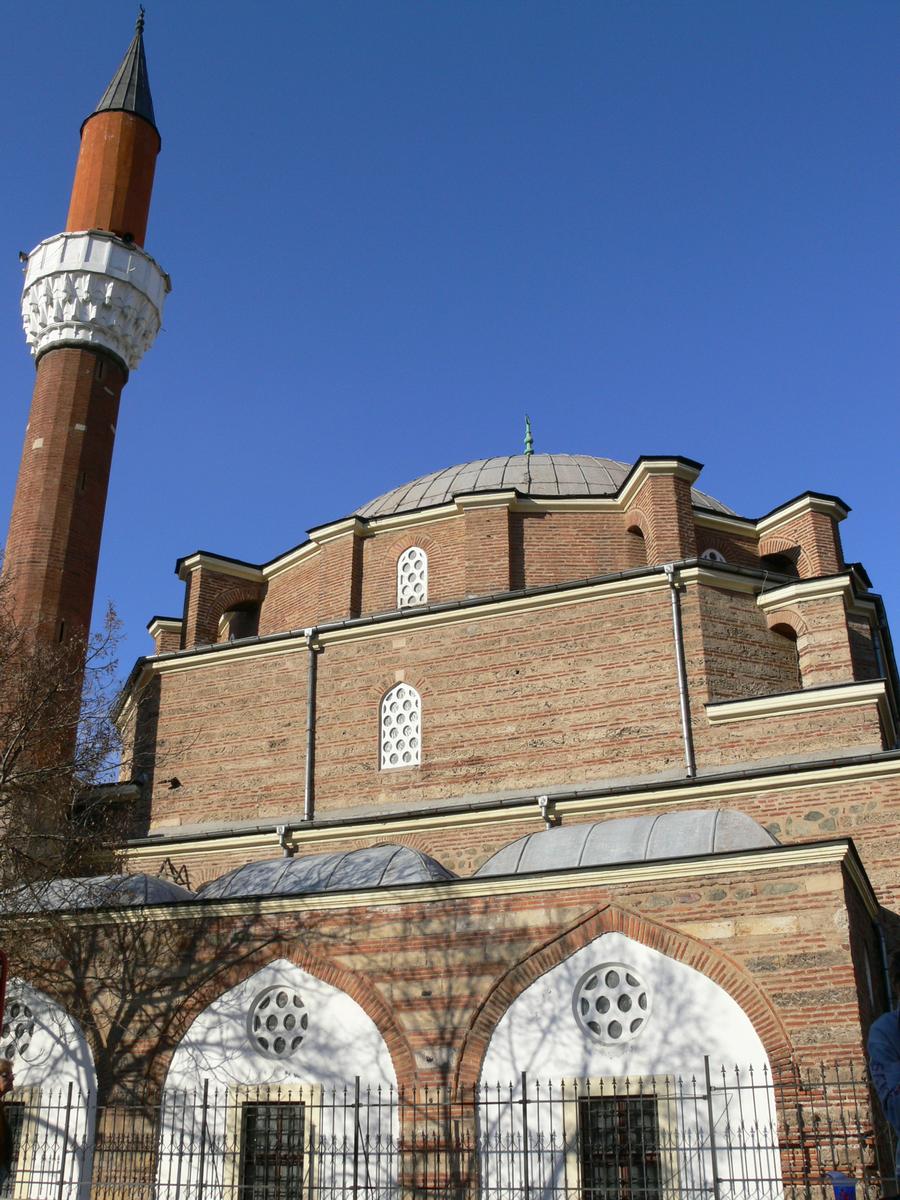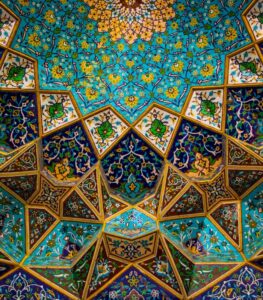While Islam has a relatively recent history in Western Europe, it has a long history in the Balkan region of the continent. Islam first arrived in southern Europe in the 8th to 10th centuries via invasion from North Africa. However, Christian conquest of the area later led to the end of Islamic reign and conversion of a large section of the region’s Muslim population to Christianity. Islam, however, kept a more substantial presence in southeastern Europe and built landmarks that have long stood the test of time. Later, the Muslim Ottoman Empire invaded and conquered vast swathes belonging to the Bulgarian, Serbian, and Byzantine Empires.
During the 14th to 15th centuries, the European region ruled over by the Ottoman Empire had a sizeable Muslim population. However, by the time the Ottoman Empire collapsed in 1922, the region’s Muslim population had already dwindled together with their influence on local architecture except for some Balkan countries that continued to host large Muslim populations.
In the relatively short period of Islamic rule in Europe, the Muslims left behind many beautiful structures, mosques and buildings with rich Islamic heritage, deeply influenced by the Muslim civilisations from the past.
Read on to discover Europes Islamic landmarks rich with both unrivalled beauty and history in no particular order!
Great Mosque of Cordoba
The Great Mosque is a stunning monument to the two religions and cultures that have shaped Andalusia: Islam and Christianity. A Renaissance church squats right on top of the most important mosque in the Islamic kingdom, making this building a must-see for anyone visiting Córdoba.
The Great Mosque was constructed on the orders of Abd ar-Rahman I in 785 CE when Córdoba was the capital of the Muslim-controlled region of Al-Andalus. It was expanded multiple times afterwards under Abd ar-Rahman’s successors up to the late 10th century.
Additional interesting locations
The grounds of the Alcázar are extensive and fascinating, so be sure to leave yourself plenty of time to wander around the whole palace and gardens – two to three hours minimum. These were the orchards of the palace in Moorish times, providing food for the royal court and the aesthetic value: scented plants and herbs, geometrically laid-out gardens, and pools fed by flowing channels for cooling, pleasant sounds of running water, and beautiful reflections.
The Palace of Viana is a lived house by noble families until the end of the 20th century but with a tremendous popular flavour. One of its main attractions is the “patios” and the garden that make it be known as the Museum of the Patios. Indoor and outdoor are perfectly integrated, giving the palace an original harmony. Among the collections stand out paintings, tapestries, leather and ceramic tiles, among others.
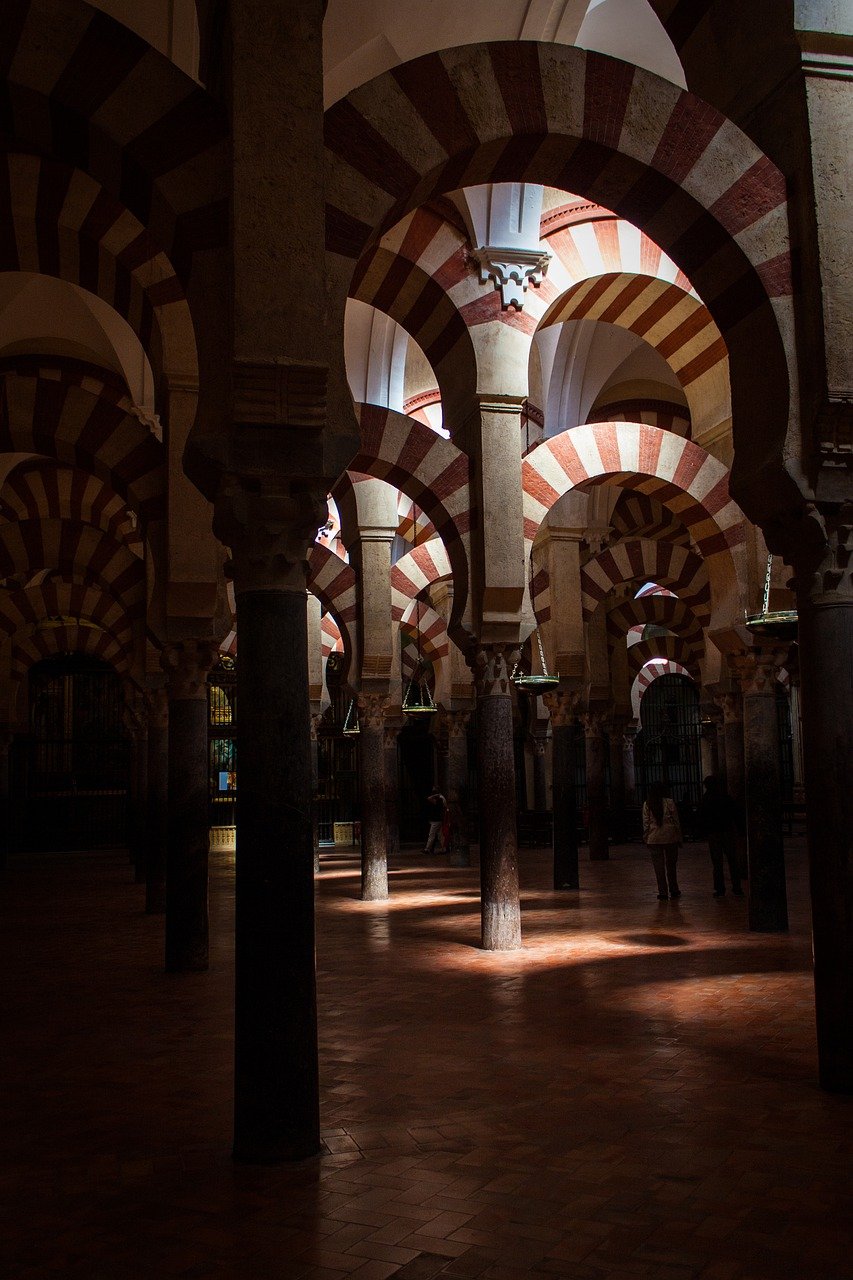
Sultanahmet Mosque (Blue Mosque)
The Blue Mosque in Istanbul, also known by its official name, the Sultan Ahmed Mosque, is an Ottoman-era historical imperial mosque located in Istanbul, Turkey. A functioning mosque that also attracts large numbers of tourists. It was constructed between 1609 and 1616 during the rule of Ahmed I. Hand-painted blue tiles adorn the mosque’s interior walls, and at night the mosque is bathed in blue, as lights frame the mosque’s five main domes six minarets and eight secondary domes.
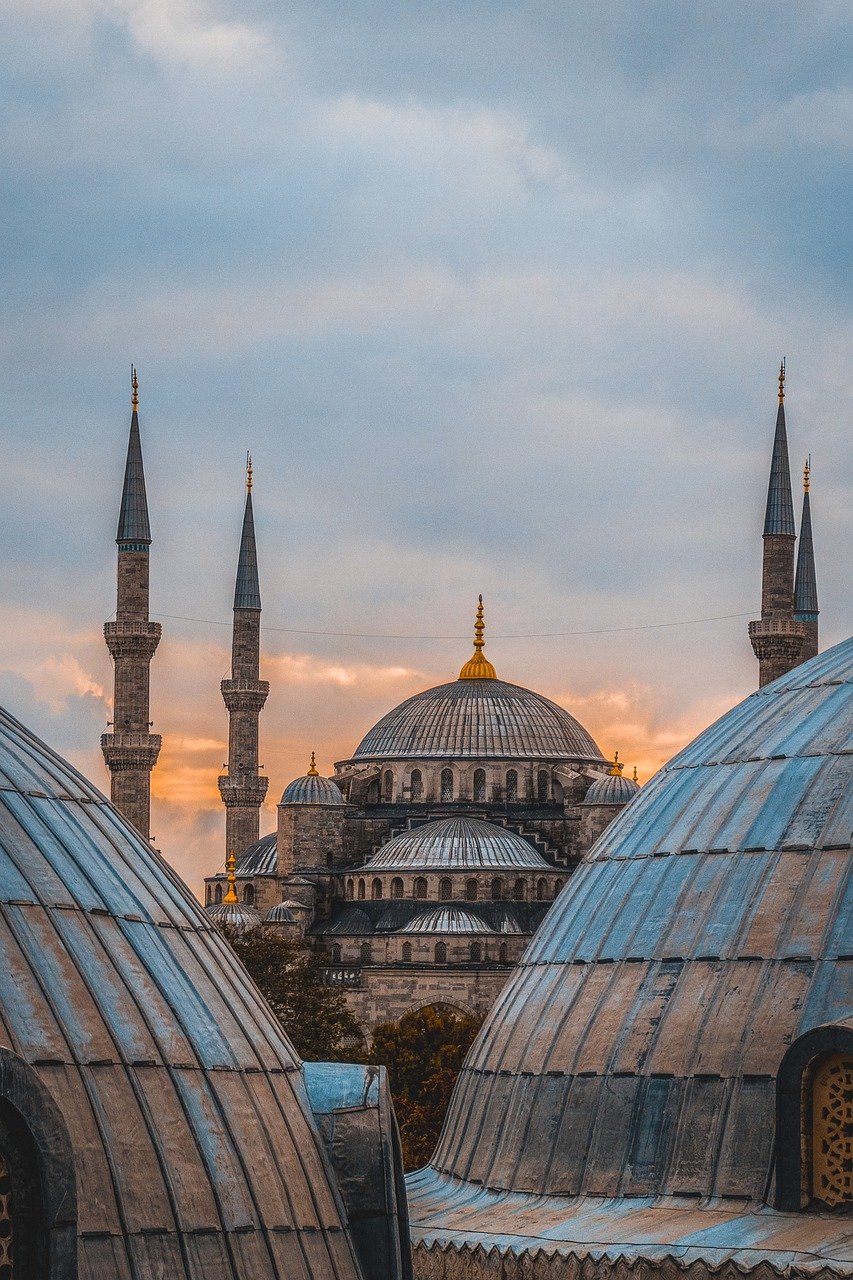
Hagia Sophia
Hagia Sophia, officially known as the Holy Hagia Sophia Grand Mosque and formerly the Church of Hagia Sophia and previously a museum, is a Late Antique place of worship in Istanbul, designed by the Greek geometers Isidore of Miletus and Anthemius of Tralles. Built-in 537 as the patriarchal cathedral of the imperial capital of Constantinople, it was the largest Christian church of the eastern Roman Empire (the Byzantine Empire) and the Eastern Orthodox Church. In 1453, after the Fall of Constantinople to the Ottoman Empire, it was converted into a mosque. In 1935, the secular Republic of Turkey established it as a museum. In 2020, it re-opened as a mosque.
Additional interesting locations
Construction, ordered by the Sultan Mehmed the Conqueror, began in 1459, six years after the conquest of Constantinople. Topkapı was initially called the “New Palace” (Yeni Saray) to distinguish it from the Old Palace (Eski Saray) in Beyazıt Square. It was given the name Topkapı, meaning Cannon Gate, in the 19th century.
The complex expanded over the centuries, with major renovations after the 1509 earthquake and the 1665 fire. The palace complex consists of four central courtyards and many smaller buildings. Female members of the Sultan’s family lived in the harem, and leading state officials, including the Grand Vizier, held meetings in the Imperial Council building.
The Lala Mustafa Pasha Mosque, originally known as the Cathedral of Saint Nicholas and later as the Saint Sophia (Ayasofya) Mosque of Mağusa, is the largest medieval building in Famagusta, Cyprus. Built between 1298 and c. 1400, it was consecrated as a Catholic cathedral in 1328. The cathedral was converted into a mosque after the Ottoman Empire captured Famagusta in 1571, and it remains a mosque to this day. Since 1954 the building has taken its name from Lala Mustafa Pasha.
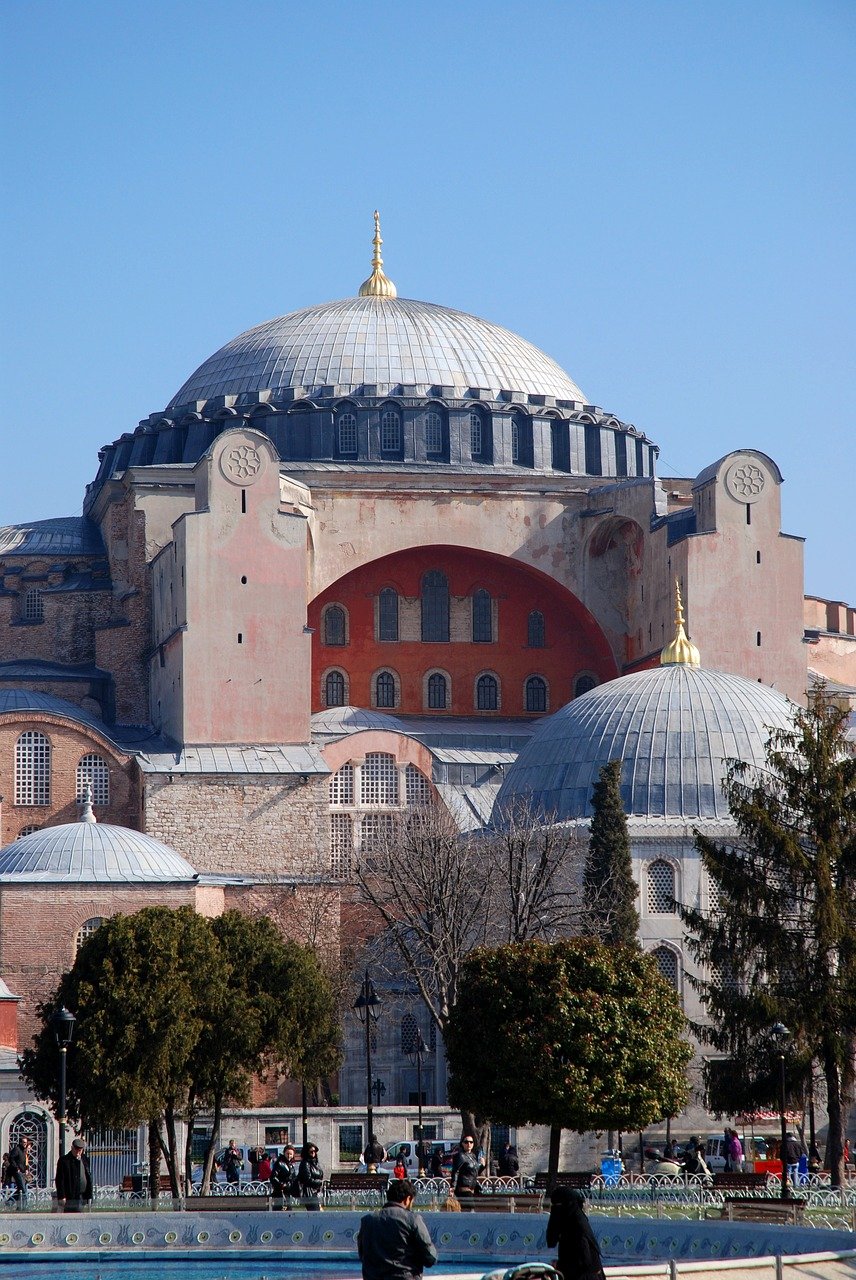
Stari Most
Stari Most (Old Bridge), also known as Mostar Bridge, is a rebuilt 16th-century Ottoman bridge Mostar in Bosnia and Herzegovina that crosses the river Neretva and connects the city’s two parts. The Old Bridge stood for 427 years until it was destroyed on 9 November 1993 by Croat paramilitary forces during the Croat–Bosniak War. Subsequently, a project was set in motion to reconstruct it; the rebuilt bridge opened on 23 July 2004.
The bridge is considered an exemplary piece of Balkan Islamic architecture and was commissioned by Suleiman the Magnificent in 1557. It was designed by Mimar Hayruddin, a student and apprentice of architect Mimar Sinan who built many of the Sultan’s critical buildings in Istanbul and around the empire.
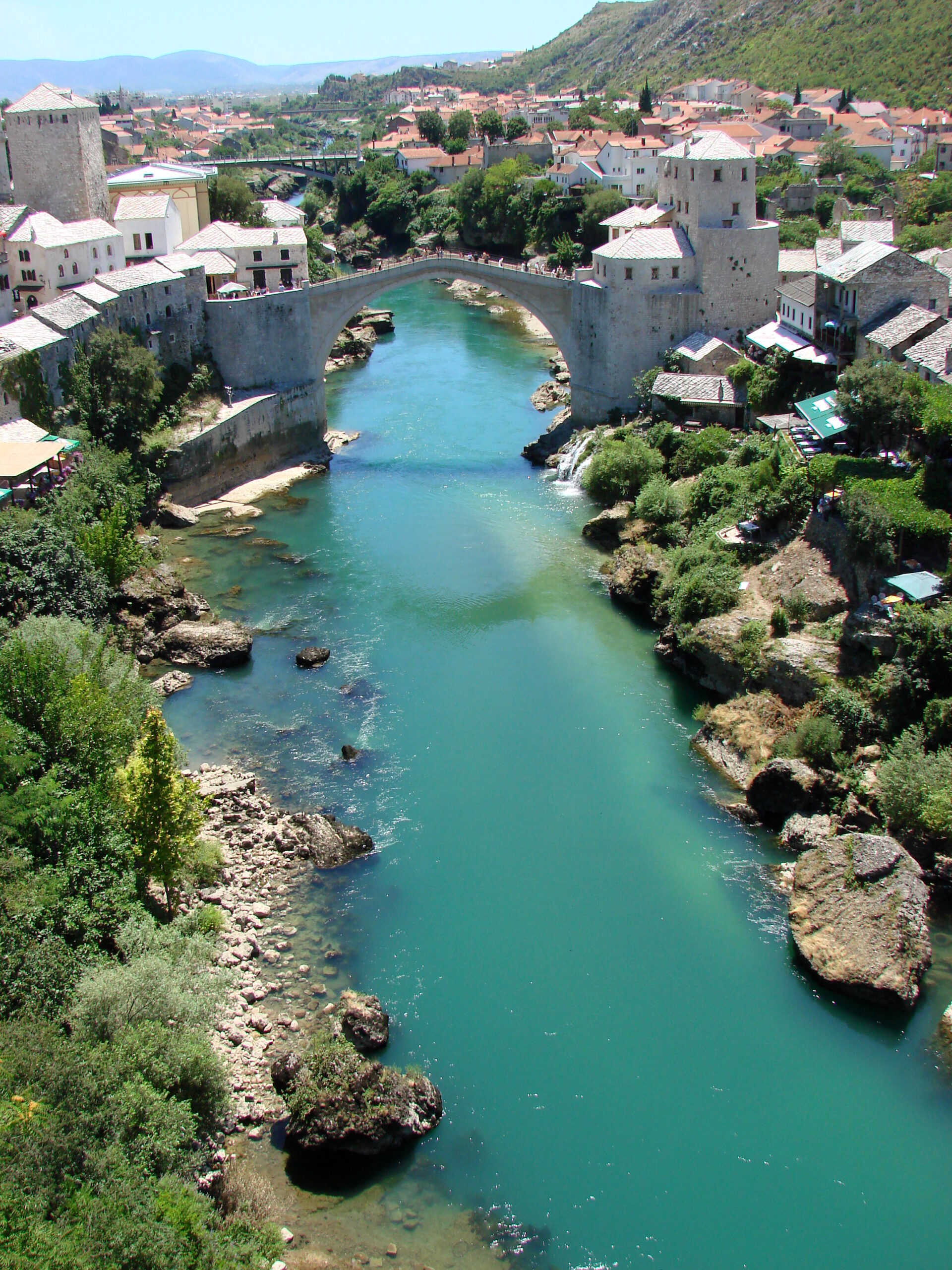
Alhambra
The Alhambra is a palace and fortress complex located in Granada, Andalusia, Spain. Moorish poets described it as “a pearl set in emeralds”, an allusion to the colour of its buildings and the woods around them.
The complex construction was begun in 1238 by Muhammad I Ibn al-Ahmar, the first Nasrid emir. It was built on the Sabika hill, an outcrop of the Sierra Nevada, the site of earlier fortresses and the 11th-century palace of Samuel ibn Naghrillah. Later, Nasrid rulers continuously modified the area. The most significant construction campaigns, which gave the Comares Palace (or Court of the Myrtles) and the Palace of the Lions, their exemplary character, took place in the 14th century during the reigns of Yusuf I and Muhammad V. After the conclusion of the Christian Reconquista in 1492, the site became the Royal Court of Ferdinand and Isabella. The palaces were partially altered in the Renaissance style.
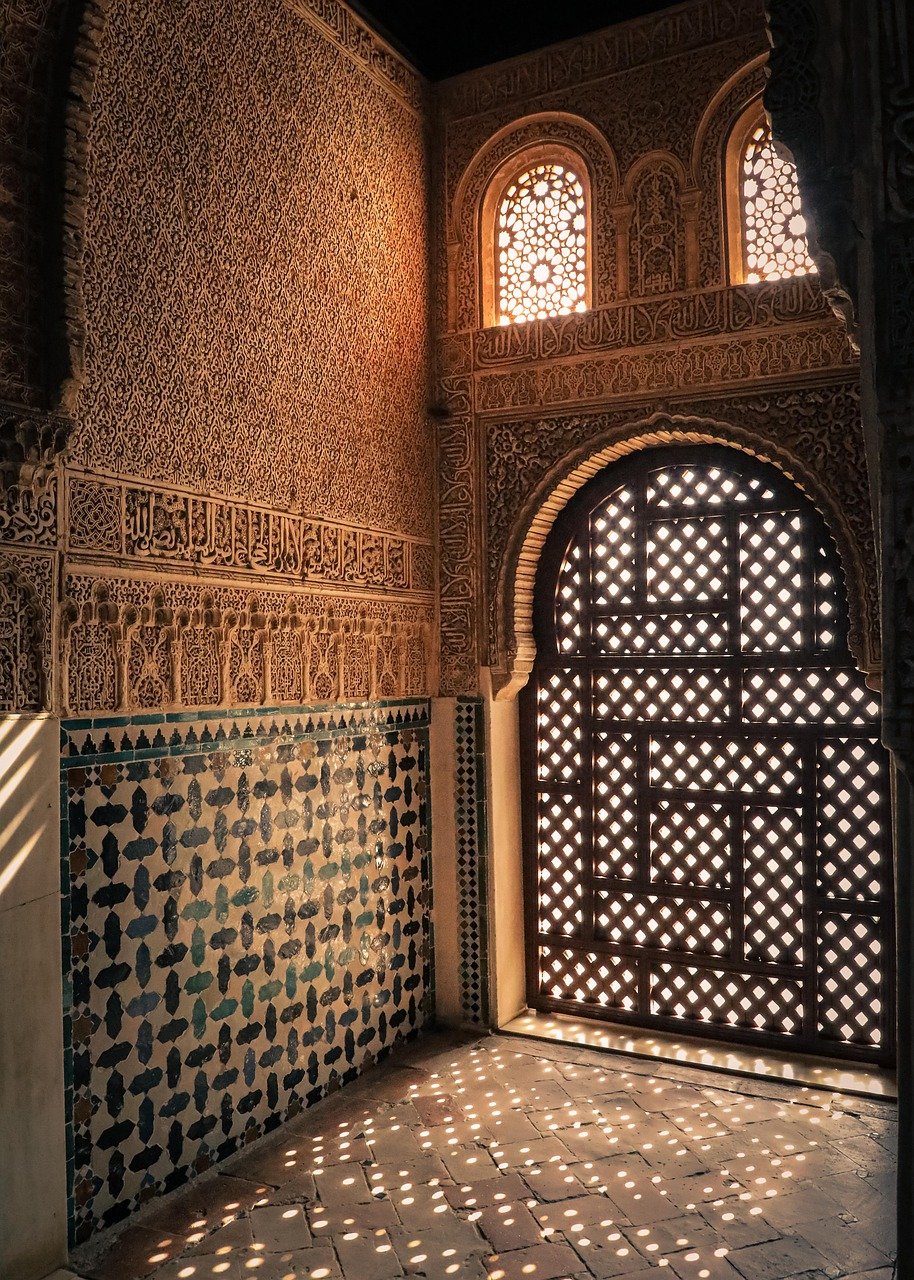
Dzumaya Mosque
Dzhumaya Mosque is located in Plovdiv, Plovdiv Province, Bulgaria. The mosque is located in the centre of Plovdiv and was built in 1363–1364 on the site of the Sveta Petka Tarnovska Cathedral Church after the conquest of Plovdiv by the Ottoman army. During the reign of Sultan Murad I in the 15th century, the old building was demolished and replaced by the modern-day mosque.
The mosque is extensive, with nine domes and a 33 m × 27 m (108 ft × 89 ft) prayer hall. There is a minaret at the northeast corner of the main façade. Interior wall paintings date to the late 18th to early 19th centuries.

Tumbul Mosque
The Sherif Halil Pasha Mosque, more commonly known as the Tombul (or Tumbul) Mosque, located in Shumen, is the largest in Bulgaria and one of the largest in the Balkans.
The mosque was built between 1740 and 1744, initially located in the north-eastern Bulgarian (then Ottoman) town’s centre but is now in Shumen’s south-west parts as the town centre moved due to the enlargement of the city. The mosque’s name comes from the shape of its dome.
The mosque and the associated buildings are the largest in Bulgaria. After the Sultan Selim Mosque in the Turkish town of Odrin (Edirne), it is the second largest on the Balkan peninsula. The Tombul Mosque is considered to be a cultural monument of national importance.
The mosque’s complex consists of the central tower (a prayer hall), a yard and a twelve-room extension (a boarding house of the madrasa). The main structure is in its fundamental part a square, then becomes an octagon passing to a circle in the middle position, and is topped by a spherical dome that is 25 meters above the ground. The interior has mural paintings of vegetable life and geometric figures and inscriptions of Arabic, phrases from the Qur’an. The yard is known for the arches in front of the twelve rooms.
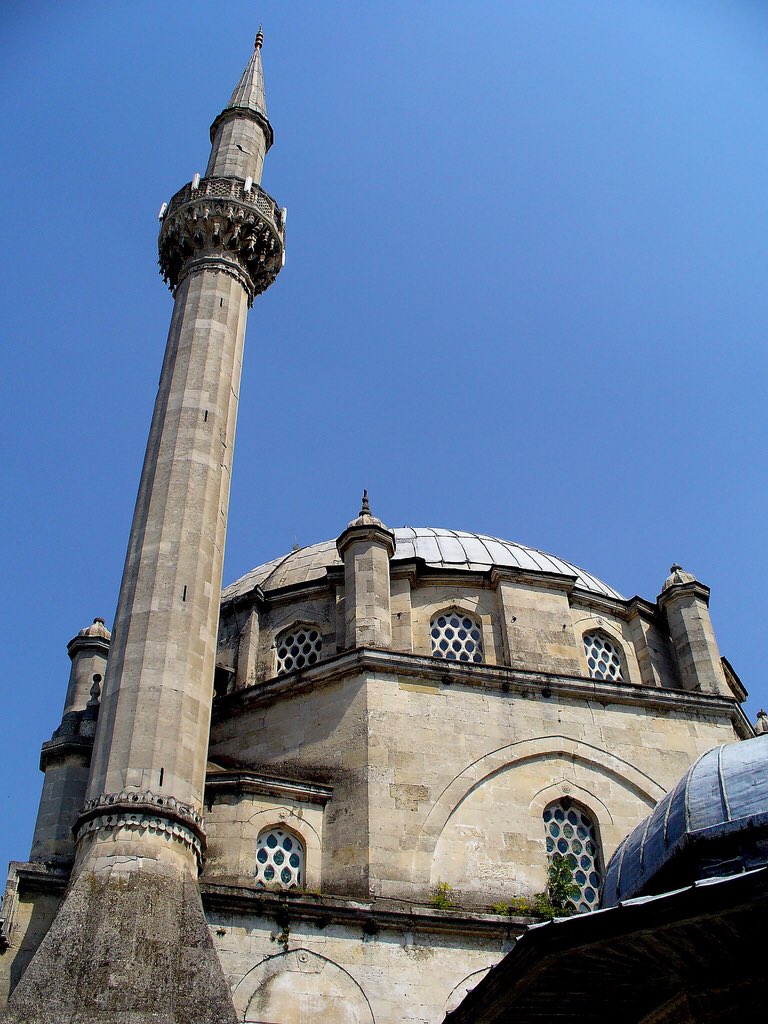
The Moorish Castle
The Moorish Castle is the name given to a medieval fortification in Gibraltar comprising various buildings, gates, and fortified walls. The dominant features are the Tower of Homage and the Gate House.
Construction of the Moorish Castle commenced in the 8th century AD (possibly AD 711); the date of its completion is not recorded. Its walls enclosed a considerable area, reaching down from the upper part of the Rock of Gibraltar to the sea. The most conspicuous remaining parts of the Castle are the upper tower, or Tower of Homage, together with various terraces and battlements below it, and the massive Gate House, with its cupola roof.
The Moorish conquest of Spain was led by Tarik ibn Ziyad and Musa ibn Nusayr, who may have landed in Europe at or near Gibraltar. Gibraltar thus became the stepping-stone to the Moorish conquests of most of Spain and part of France. The strategic importance of Gibraltar rose in the last years of the Moorish rule, when, after the successful Spanish reconquest of the entire Guadalquivir valley, Gibraltar became one of the key elements in communication between the Emirate of Granada and Moorish domains in northwestern Africa.
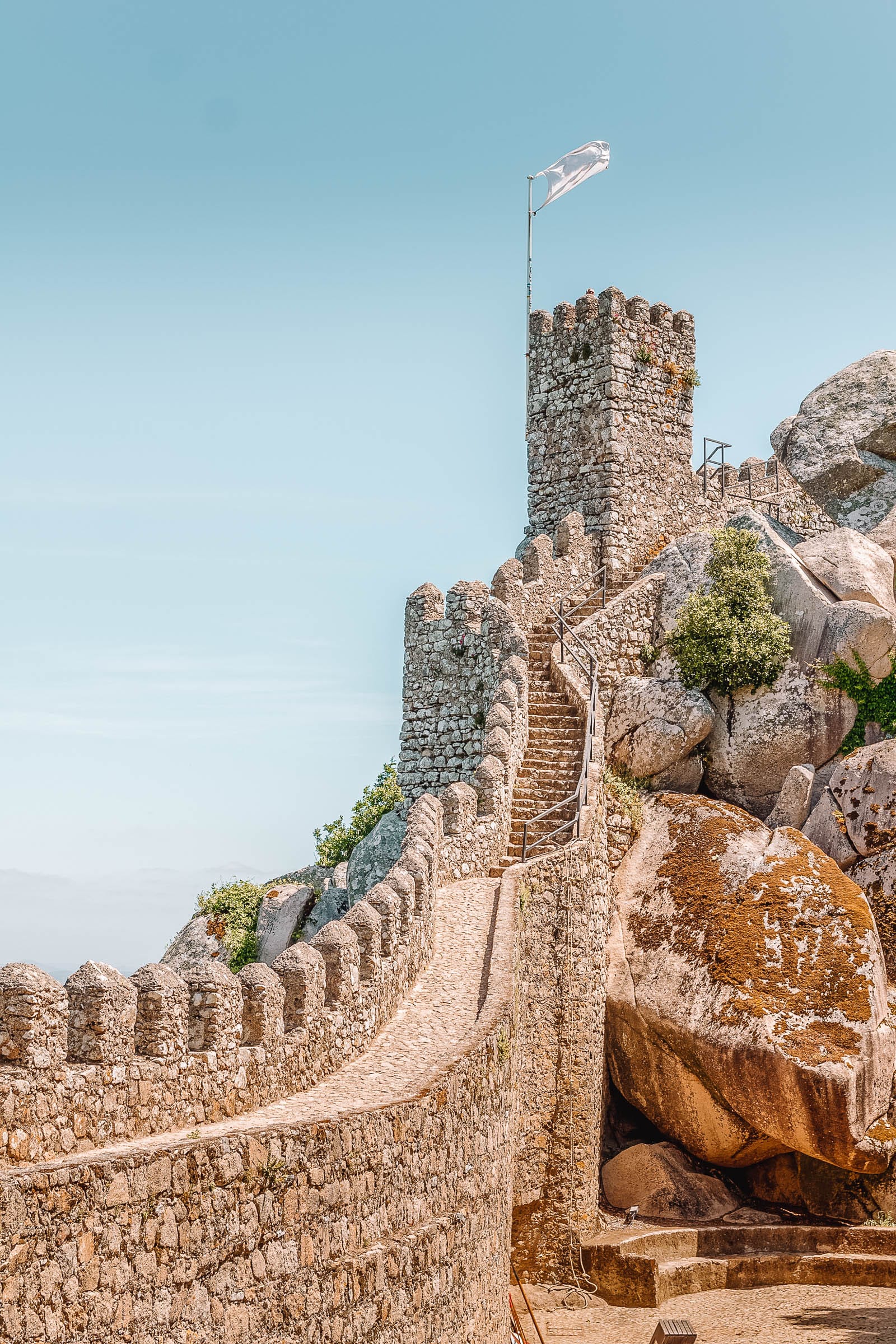
Sintra National Palace
The Palace of Sintra, also called Town Palace, is located in the town of Sintra, in the Lisbon District of Portugal. It is a present-day historic house museum.
It was one of two castles at Sintra in the Moorish Al-Andalus era that began with the Umayyad conquest of Hispania in the 8th century. The other, now known as the Castelo dos Mouros (Castle of the Moors), is a romantic ruin atop a high hill overlooking modern Sintra.
The castle, now known as Sintra National Palace, located downhill from the Castelo dos Mouros, was the residence of the Islamic Moorish Taifa of Lisbon rulers of the region. The earliest mention in a source is by Arab geographer Al-Bacr. In the 12th century, the village was conquered by King Afonso Henriques, who took the ‘Sintra Palace’ castle for his use. The blend of Gothic, Manueline, Moorish and Mudéjar styles in the present palace mainly results from building campaigns in the 15th and early 16th centuries.
Nothing built during Moorish rule or during the reign of the first Portuguese kings survives. The earliest surviving part of the palace is the Royal Chapel, possibly built during the reign of King Dinis I in the early 14th century.

Xhamia e Mbretit
The Imperial Mosque (Xhamia e Mbretit) is an Ottoman mosque located in Pristina, Kosovo. It was built in 1461 by Sultan Mehmet II Fatih.
During the Austro-Turkish wars, at the end of the 17th century, it was temporarily turned into a Catholic church. One of the most prominent Albanian writers, Pjetër Bogdani, also an active leader of the pro-Austrian rebels, was buried here. After the Ottomans regained control, in 1690, the bones of Pjetër Bogdani were exhumed and thrown into the street by the Ottoman soldiers.

Mosque of Cristo de la Luz
The Mosque of Cristo de la Luz is a former mosque in Toledo, Spain. It is one of the ten that existed in the city during the Moorish period. The edifice was then known as Mezquita Bab-al-Mardum, deriving its name from the city gate Bab al-Mardum. It is located near the Puerta del Sol, in an area of the city once called Medina where wealthy Muslims used to live.
It was converted into a church around 1085. This occurred when Toledo was taken control of by Christians. It has a square shape that measures 8m by 8m long and has a semicircle part attached to it which is the head of the cross shape. It was added to the back of the building in the 12th century even though the building is square since it was converted into a church, they tried to make it seem more Christian like adding features from Christian churches that were typically cross-shaped.
It is an example of Mudejar architecture from the altar, domed part, and transept (arms of the cross shape). It was built in 999 during the Ummayed dynasty and the patron was Ahmad Ibn Hadidi. The Arabic inscription in Kufic on the building states that Musa Ibn Ali built it.
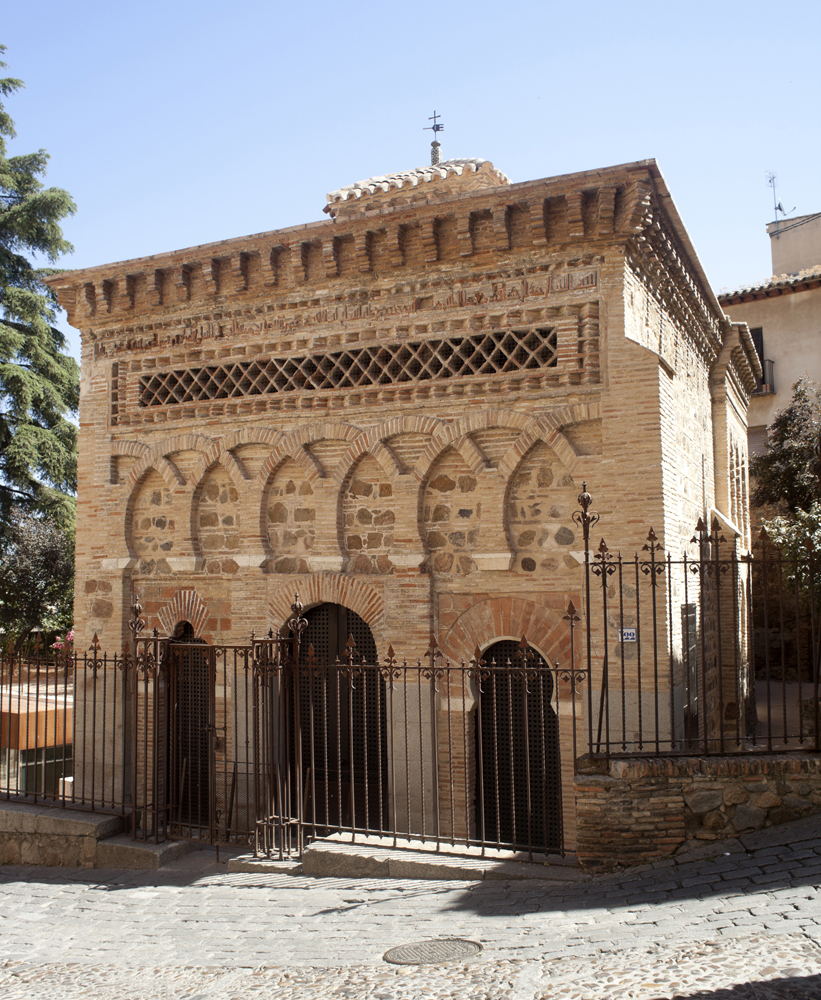
Banya Bashi Mosque
The mosque was designed by the famous Ottoman architect Mimar Sinan and completed in 1566, during the Ottomans’ control of the city. The mosque derives its name from Banya Bashi, which means many baths. The most outstanding feature of the mosque is that it was built over natural thermal spas; one can even see the steam rising from vents in the ground near the mosque walls. The mosque is famous for its large dome, diameter 15m, and minaret.
Currently, the Banya Bashi Mosque is the only functioning mosque in Sofia, a remnant of the Ottoman rule of Bulgaria that lasted nearly five centuries and is used by the city’s Muslim community.
